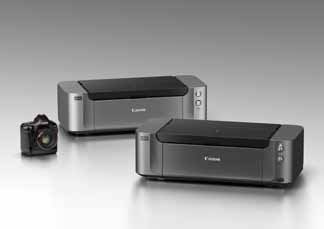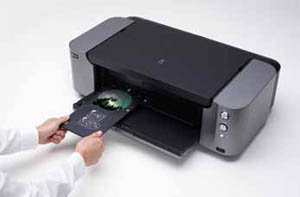articles/Review/proprinters-page4
PIXMA Pro printers - part 4 of 1 2 3 4 5
by Mike McNamee Published 01/10/2012

Since not everyone uses one of the two X-Rite devices here's a few tips that are useful for making profiles for your papers. It's essential to turn off the colour management in the print driver when printing the colour patches from your profiling software. If you use the software provided with your colour management device make sure it is set to create ICC v2 profiles and not ICC v4 profiles. Usually the paper maker includes a sheet that suggests a Canon paper type that their media is similar to, using Tecco BT270 Baryt as an example, Tecco suggest that the Canon Photo Paper Plus Glossy is a good match. It's important to get this right as these determine how much ink will be put on the paper in the profiling process.
Mac OS-X users need to select ColorSync from the Color Matching section of the printer window and ensure that Generic RGB is the chosen profile when printing patches.
Making the best profiles takes time, the prints need to fully dry before you scan the coloured patches. It's good practice to wait at least an hour after printing so that the inks have fully bonded and reacted with the paper. In preparing this article we made ICC profiles for several media, and printed from Photoshop CS6 and Lightroom 4.1 using both the Canon Easy-PhotoPrint Pro plug-in and standard print drivers. In all cases, prints were consistent and colour accurate at all times.

Just as we went to press, photokina opened and Canon launched new PIXMA Pro printers. We have updated information on the new models on the EOS Network website, please visit http://www.eos-network.com/swpp
Manufacturer or third party ink?
Looked at superficially, it seems there is a great saving to be made in buying third party inks when your original ink cartridges run out.
However, this is a false economy. Manufacturer inks may be comparatively expensive, but there is a reason for it - quality control. The print heads in Canon printers feature tiny holes through which the ink is ejected. With low quality inks, impurities in the ink will block up the print head and lead to banding and lower print quality. Equally, Canon ink production is very tightly controlled - if you buy a red ink tank for your printer today and another sometime next year, you will find there is no batch-to-batch variability, they are both the same red. If you're at all concerned (as you should be) about colour accuracy and matching what comes out of your printer with what you see on screen, this is crucial. If the ink colours are slightly different between batches, you'll never know where to start with profiling and you'll end up with inconsistent colours. Finally, Canon inks are designed to work with Canon papers for extra print longevity. Even with the slightly less durable dye based inks of the PIXMA Pro 9000 MK II, using Canon papers takes advantage of the ChromaLife100 system so your prints will last for up to 100 years when stored in an album.
Please Note:
There is more than one page for this Article.
You are currently on page 4
- PIXMA Pro printers page 1
- PIXMA Pro printers page 2
- PIXMA Pro printers page 3
- PIXMA Pro printers page 4
- PIXMA Pro printers page 5
1st Published 01/10/2012
last update 09/12/2022 14:58:17
More Review Articles
There are 29 days to get ready for The Society of Photographers Convention and Trade Show at The Novotel London West, Hammersmith ...
which starts on Wednesday 14th January 2026





